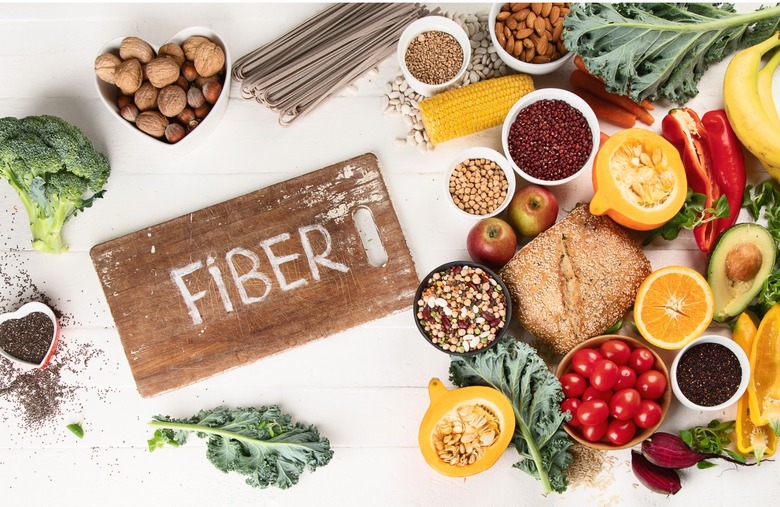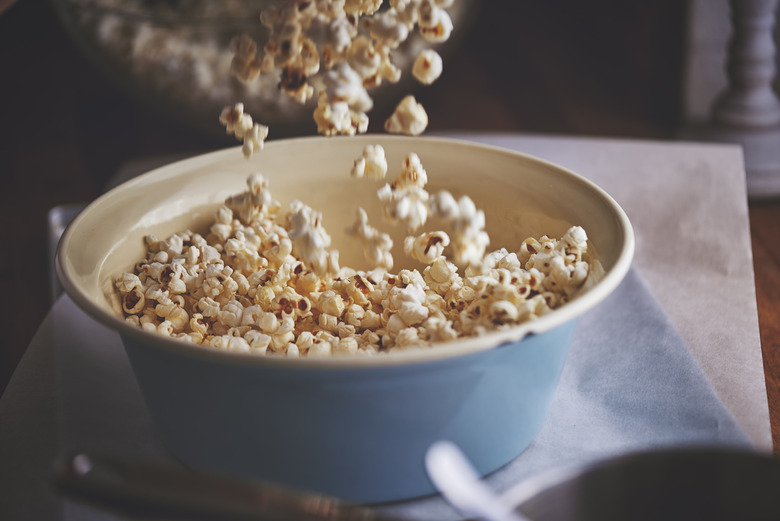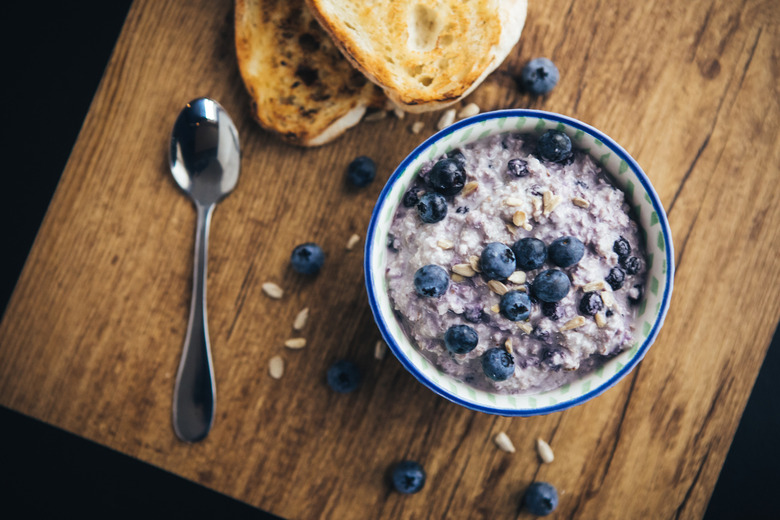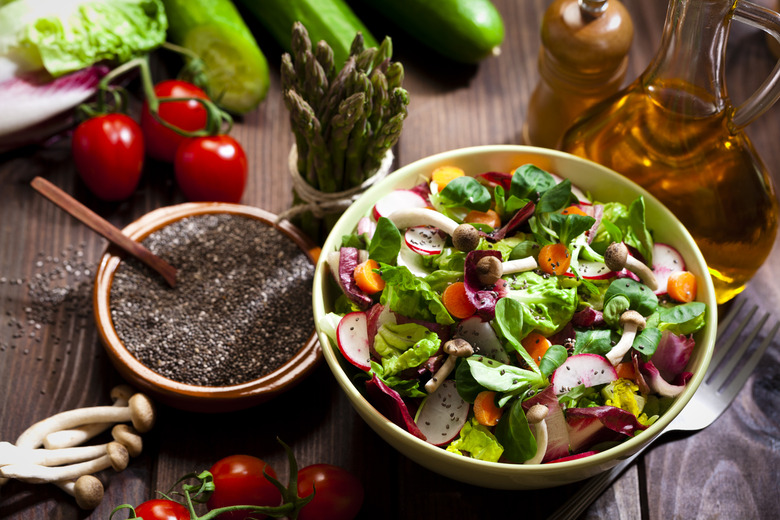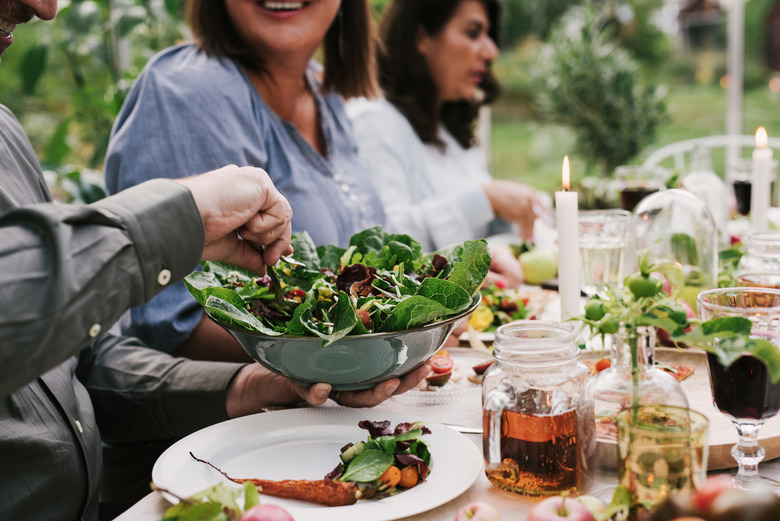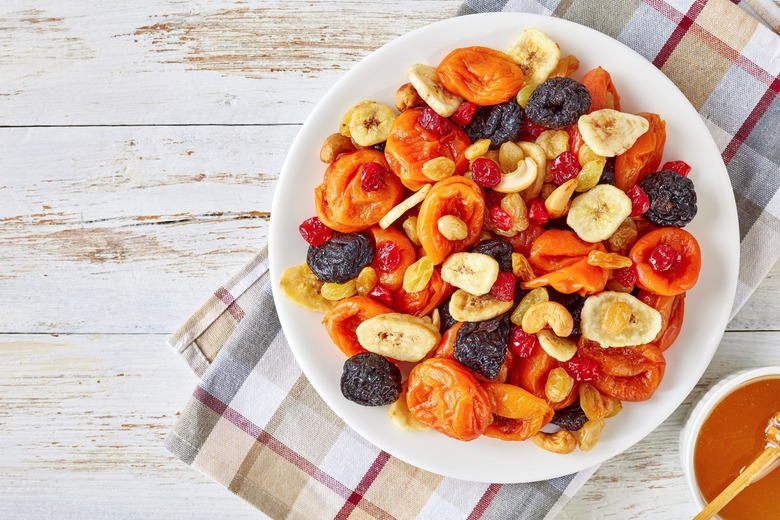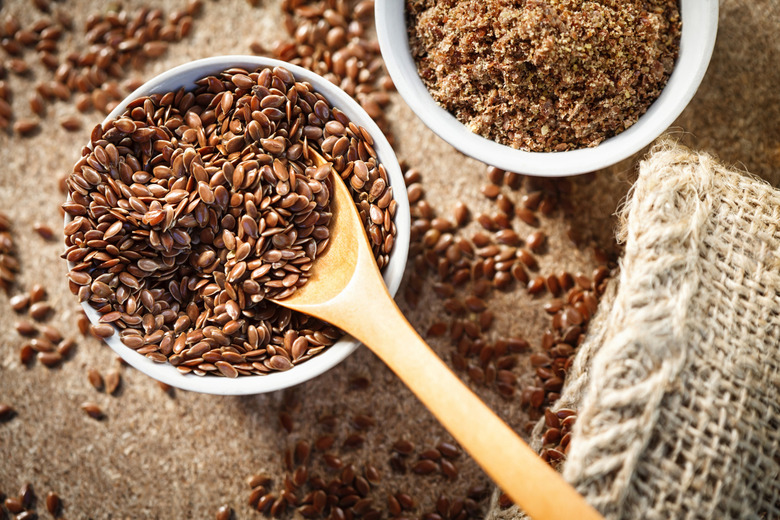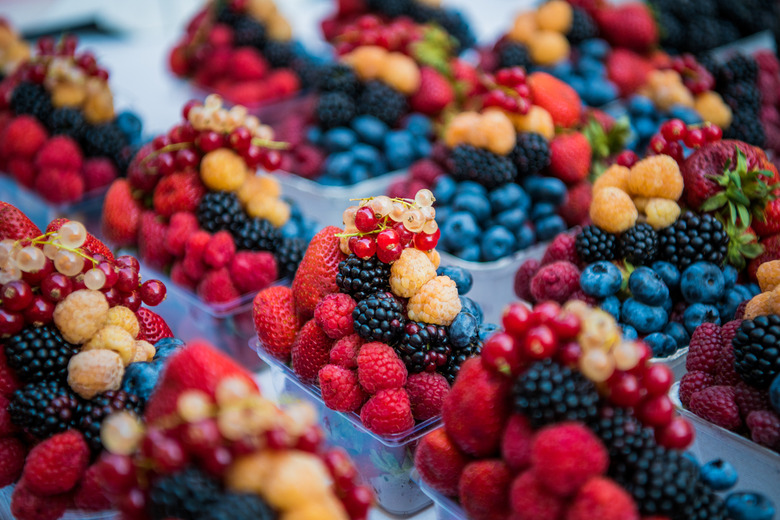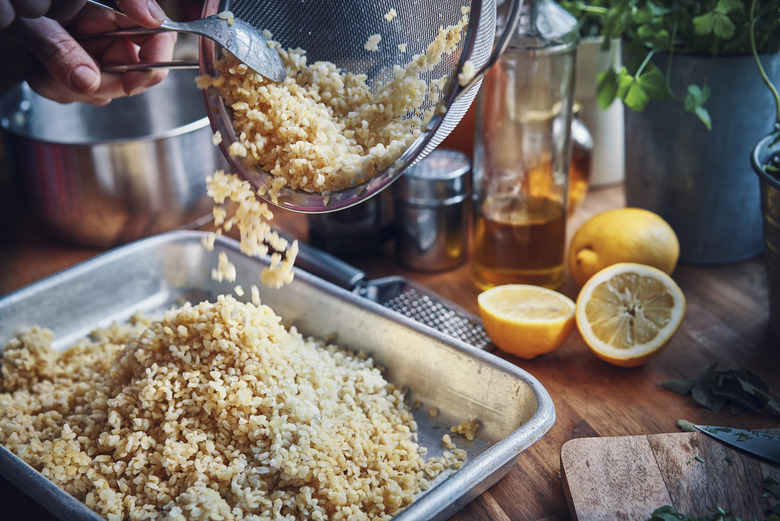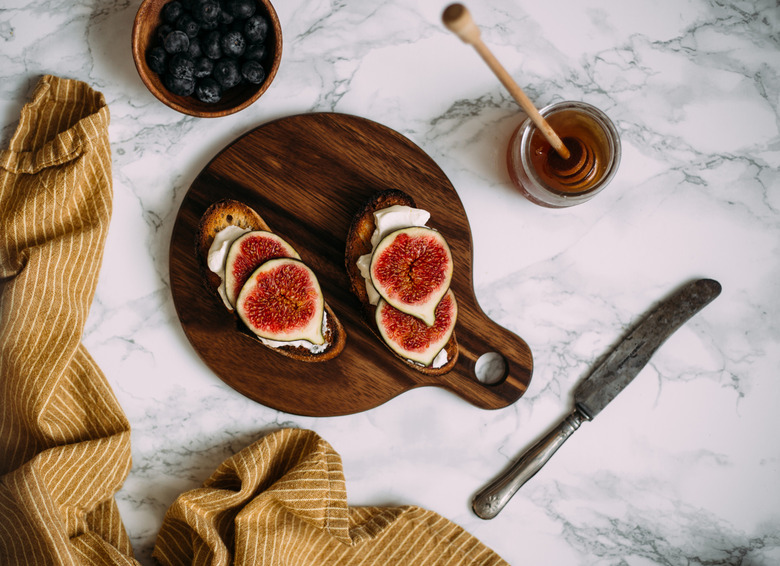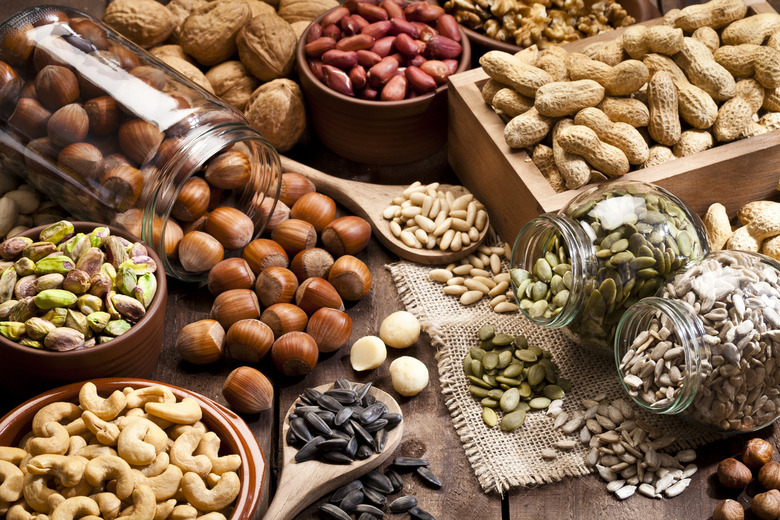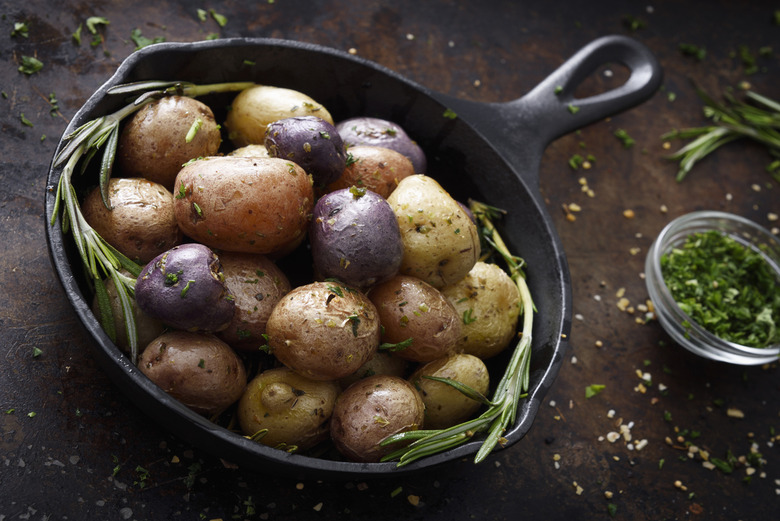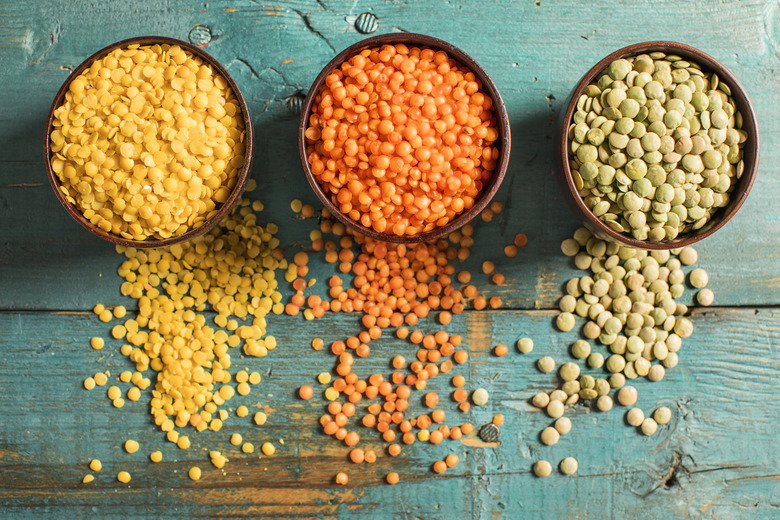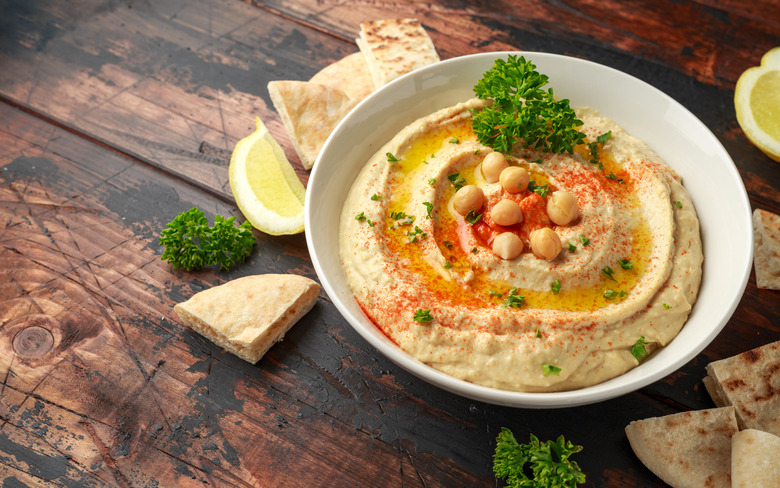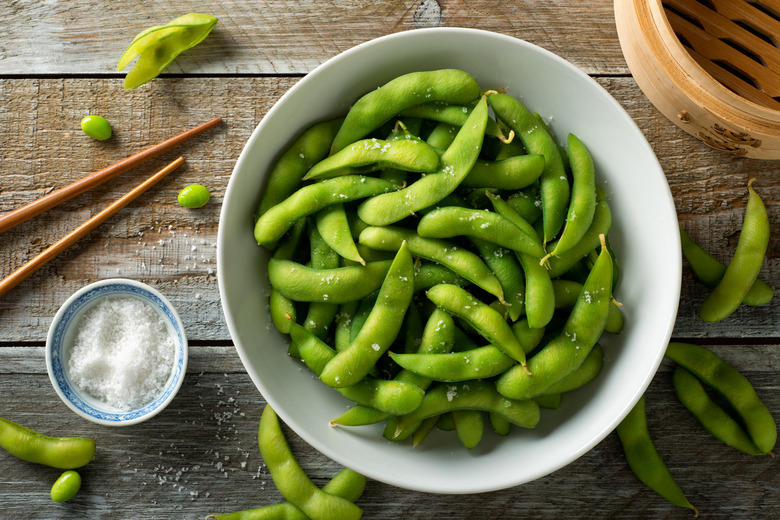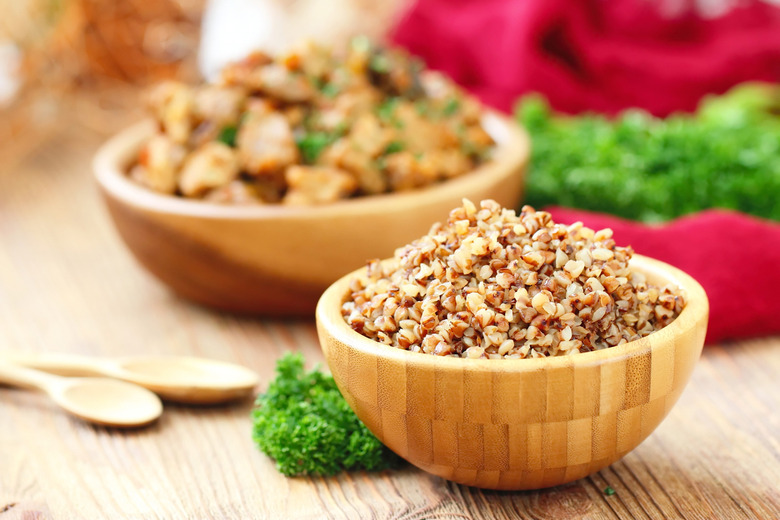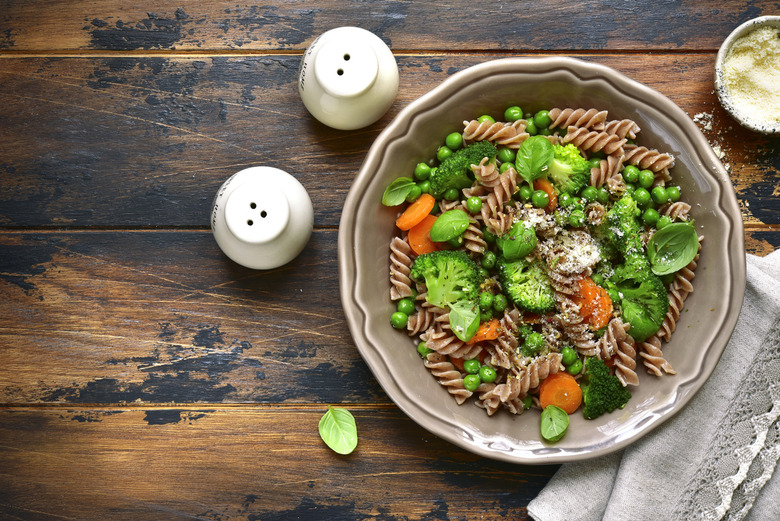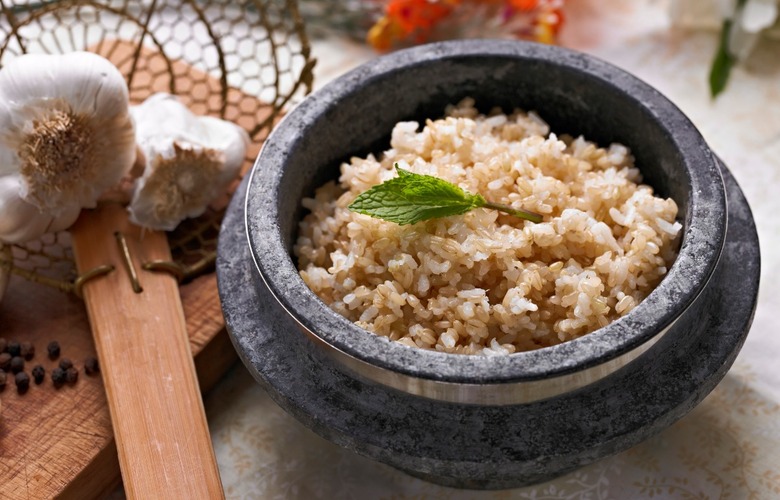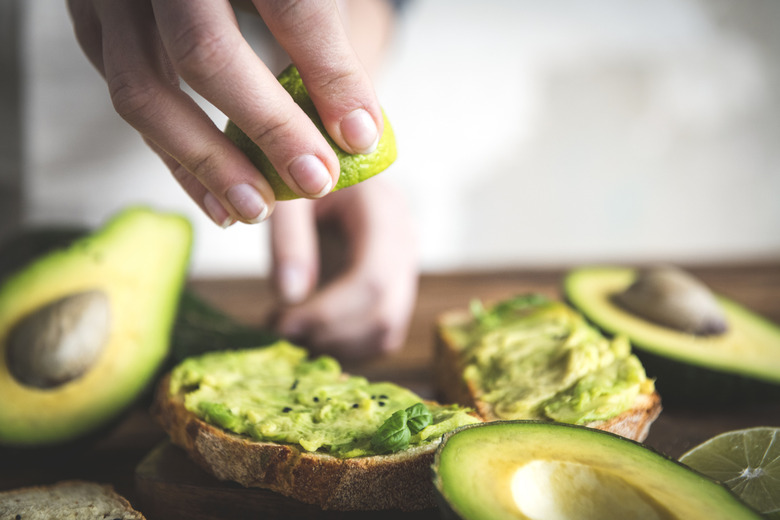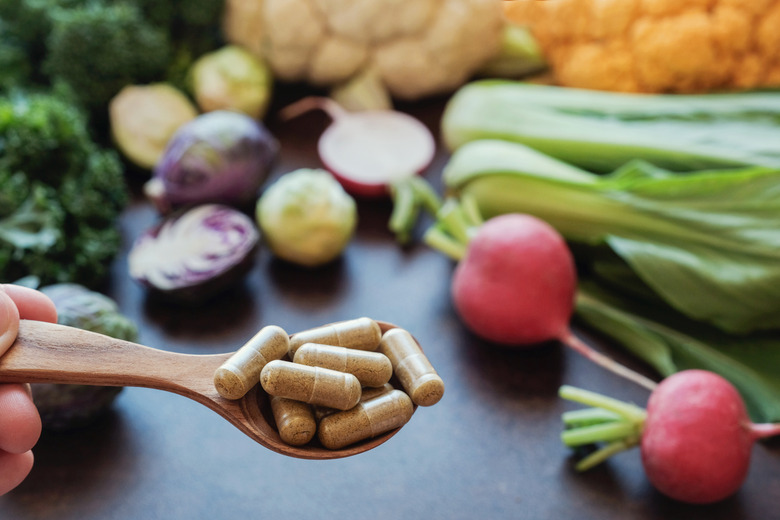25 Ways To Add More Fiber To Your Diet
You've probably been told by your doctor countless times that you need to eat more fiber. In addition to preventing or relieving constipation, fiber has plenty of health benefits, such as lowering your chances of heart disease, diabetes and even certain types of cancer.
While it's easy to say you need more fiber, it's a bit harder figuring out exactly what that looks like. There are plenty of familiar foods that you'll find are a great source of fiber, however, as well as some exciting new ingredients to try out. Adding more of these foods into your everyday diet can bring you tons of everyday benefits.
Popcorn
Three cups of air-popped popcorn, or 1 ounce, will provide you with 3.6 grams of fiber. Popcorn, which is a whole grain, can be a great snack any time of day.
Whole fruits and vegetables
While juicing can be a way to get a lot of fruits and vegetables into your diet, the process completely strips them of fiber and leaves you with a concentration of sugar. Eat whole fruits and vegetables to maximize your fiber intake.
Oatmeal
High in vitamins, antioxidants and minerals, oats are a super healthy grain. Just a cup of oatmeal has 4 grams of fiber, and a bowl for breakfast is a great way to start your day. Oats have both insoluble and soluble fiber, and include a soluble fiber called oat beta-glucan which can be great for blood sugar and cholesterol levels. This also makes oatmeal among the best foods to fight bloat.
Chia seeds
A versatile ingredient that can be used in pudding, bars and breads, chia seeds provide 10 grams of fiber per ounce, as well as plenty of vitamins, minerals, omega-3 fatty acids and protein. Made up of 95 percent insoluble fiber, eating chia seeds will help with digestion and has also been linked to a lower risk of diabetes.
Salad before dinner
There are many benefits to eating vegetables, including fiber content. If you make sure to eat them before a meal, you'll find that you eat more of them during. One study done at Penn State found that women who were given salad before their meal ate 23 percent more vegetables than those served salad during the meal itself, which means they ate more fiber overall.
Dried fruit
An easy snack to eat on the go, dried fruit is filled with fiber. Just by weight, you'll get up to 3.5 times the fiber, minerals and vitamins that you would from fresh fruit. Add some to your cereal, trail mix or salad.
Alternative flours
Try your hand at baking with flours other than white flour to up your fiber intake. Whole-wheat pastry flour, for example, has three times as much fiber as white flour (which has 3.4 grams of fiber per cup). Soy flour has 5 grams of fiber per ounce, while coconut flour has 11 grams per ounce. In addition to whole-wheat flour, many other non-wheat flours, such as almond, barley, chickpea and hazelnut flours, have 3 grams of fiber per ounce.
Flax seeds
Just a tablespoon of flax seeds has 2.8 grams of fiber (that's 46 grams per cup), and in addition, flax seeds are the richest plant source of omega-3 fats, which help prevent diabetes, heart disease, inflammation and mood swings. Use it in your baking or add some to a smoothie.
Berries
If you're craving fruits or something sweet, berries with seeds are especially rich with fiber. Raspberries and blackberries have 8 grams of fiber per cup, while blueberries have 4 grams and strawberries have 3 grams. Berries are also relatively less sugary than other fruits and are perfect for adding to salads, cereal or yogurt.
Bulgur
Made from cracked parboiled groats of wheat, bulgur is a traditional Middle Eastern cereal food that is recognized as a whole grain by the United States Department of Agriculture. Just one cup has 8 grams of fiber, and it's a perfect addition to any salad or can be used to make porridge or pudding.
Figs
Eating just four figs will give you almost 8 grams of fiber, as well as plenty of iron and antioxidants. Figs have been known to help stabilize blood sugar and triglyceride levels, and fresh figs contain less sugar than the dried variety.
Nuts
Pretty much any kind of nut will give you plenty of fiber, as well as protein and fat. Almonds, in particular, are a great source of fiber with about 3 grams per ounce. Eat your nuts fresh as a snack or use them in recipes or salads.
Potatoes
One large baked potato has 7 grams of fiber, as well as plenty of B vitamins, vitamin C and magnesium. They're a versatile and much-loved food, which means there are plenty of ways to cook potatoes and plenty of ways to get that fiber.
Freekeh
Freekeh, or farik, is another cereal food made from green durum wheat that's been roasted and rubbed. Originating in the cuisines of North Africa and the Levant, it's popular throughout many eastern Mediterranean countries where it's often used as a side for meat dishes or mixed into salads. Try this yourself and you'll find 13.3 grams of fiber per 100 grams of freekeh.
Lentils
Just one cup of cooked lentils has about 16 grams of fiber. Lentils are also good for your heart and high in protein, and they help to stabilize your blood sugar.
Chickpeas
Another type of legume, chickpeas are full of nutrients such as protein and various minerals, and just one cup of cooked chickpeas contains about 12 grams. The best way to enjoy chickpeas is by making yourself some hummus.
Edamame
High in protein, one cup of cooked edamame has 8 grams of fiber. These boiled green soybeans are high in iron and protein and may help lower your cholesterol. Sprinkle some salt on them for a light snack or add some edamame to a burger, salad or guacamole.
Buckwheat
One cup of roasted and cooked buckwheat groats, or hulled seeds, has 4.5 grams of fiber. Rich in magnesium and zinc, buckwheat contains no gluten and is traditionally used to make soba noodles in Japan. It can also be added to cereal or smoothies or used as a gluten-free alternative to plain flour. Buckwheat is so beloved by the people of Preston County, West Virginia, that they even hold an entire food festival in its honor every year.
Artichokes
A medium artichoke has about 7 grams of fiber and is one of the most antioxidant-rich vegetables. Artichokes are also high in folate, vitamin C and vitamin K, as well as rich in vitamins and minerals, such as iron, magnesium, phosphorus and potassium. The flower bud of a large thistle, an artichoke can be used in many ways. Bake, fry, grill or stuff your artichokes or enjoy them as an ingredient in a larger meal such as pasta or a dip.
Dark chocolate
Dark chocolate is filled with nutrients and antioxidants, and if you eat dark chocolate with a cocoa content of at least 75 percent, you'll have about 3 grams of fiber for every 1-ounce piece. It's also delicious and great in desserts, as if that wasn't enough reason to eat dark chocolate every day.
Green peas
Green peas can be added to almost anything, and you'll find 9 grams of fiber in just 1 cup. Super high in protein, green peas can help control blood sugar and have antioxidants and minerals that are good for your heart, such as calcium, magnesium and potassium. This vegetable is also delicious, and one of the vintage ingredients that need to make a comeback.
Whole-wheat pasta
Pasta is delicious and filling, and whole-wheat pasta is an excellent source of fiber. Just 1 cup of cooked whole-wheat spaghetti will give you about 6 grams of fiber, which is about 60 percent more than regular spaghetti.
Brown rice
Brown rice has much more fiber than white rice, with 4 grams of fiber per cup as opposed to 2 grams per cup. It's usually a pretty good alternative and tastes great with most recipes, in addition to being gluten-free and a good option for people looking to lower or control their blood sugar or cholesterol.
Avocados
One of the many reasons to eat an avocado every day is that a whole avocado has 5 grams of fiber, as well as a lot of healthy, monounsaturated fatty acids. Avocados are also good for your heart and a great substitute for butter, mayonnaise, cheese, cream cheese or sour cream. Most popularly used with toast or for guacamole, this versatile fruit can liven up your salad, burrito, burger, pasta and more.
Fiber supplements
While the best way to get fiber is through your diet, supplements can be an easy, surefire way to make sure you're getting what you need. Examples of fiber supplements include psyllium (the main ingredient in Metamucil, which is often used to remedy constipation), guar fiber (found in processed foods for texture), beta-glucans (a fiber that ferments in the gut and acts as a prebiotic) and glucomannan (the main ingredient in shirataki noodles). It's important to be careful when taking fiber supplements, however, as they can interfere with certain medications and cause bloating and stomach discomfort. Make sure you take your meds at least an hour before or four hours after taking the supplement, and introduce the fiber supplements gradually, making sure to drink a lot of water.
More from The Daily Meal:
Bogus Health and Nutrition Facts You Learned in School
The Best Foods for Your Gut — And Why You Should Care
Surprising Reasons You Should Eat More Fat
